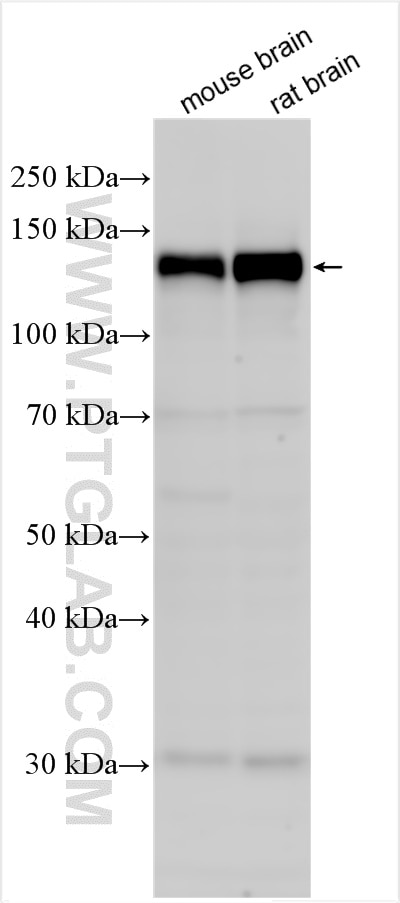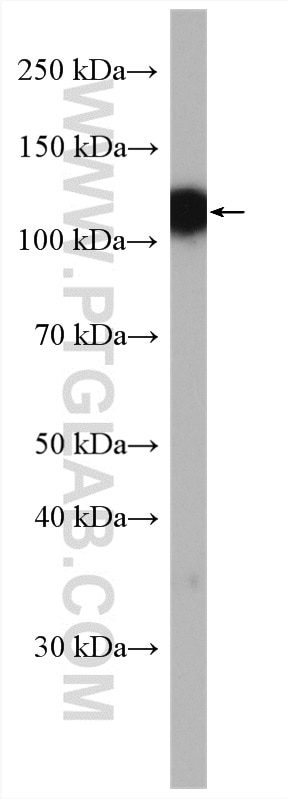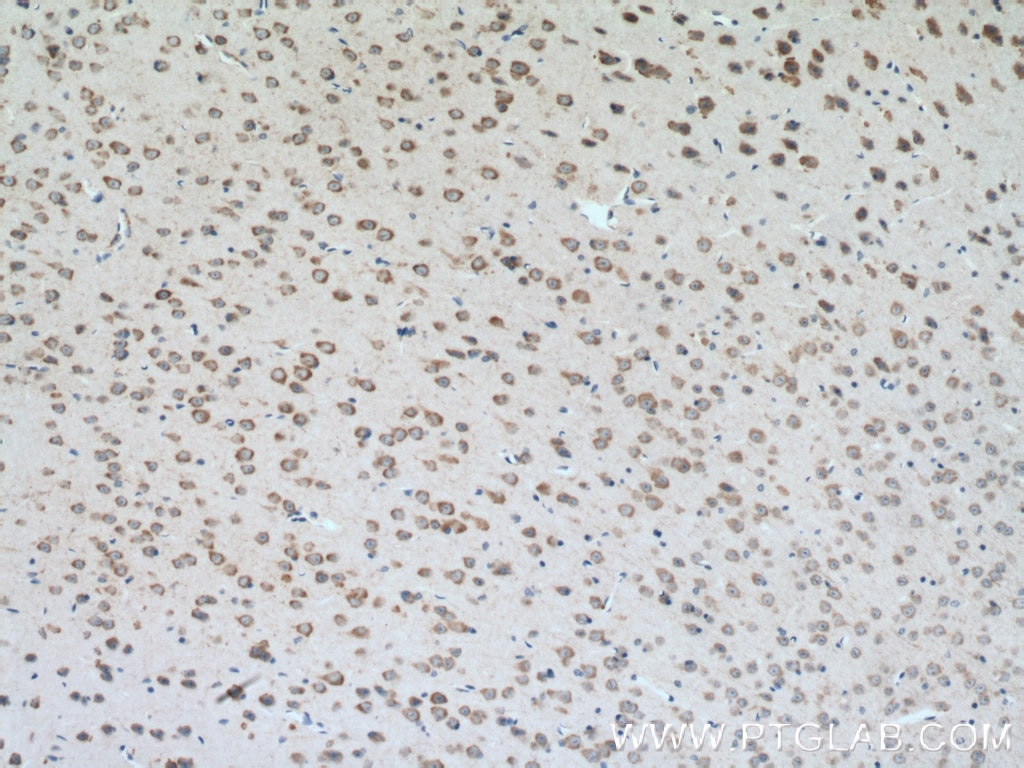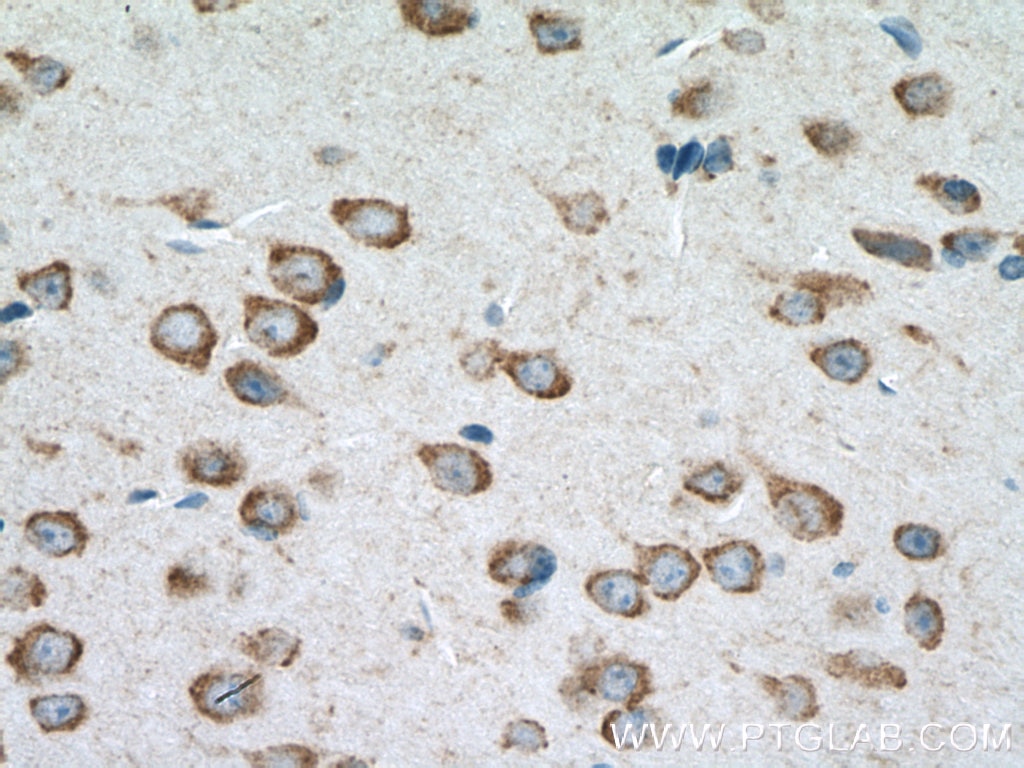CLSTN3 Polyklonaler Antikörper
CLSTN3 Polyklonal Antikörper für WB, IHC, ELISA
Wirt / Isotyp
Kaninchen / IgG
Getestete Reaktivität
Hausschwein, Maus, Ratte und mehr (1)
Anwendung
WB, IHC, IP, CoIP, ELISA, IF
Konjugation
Unkonjugiert
Kat-Nr. : 13302-1-AP
Synonyme
Geprüfte Anwendungen
| Erfolgreiche Detektion in WB | Maushirngewebe, Hausschwein-Hirngewebe, Rattenhirngewebe |
| Erfolgreiche Detektion in IHC | Maushirngewebe Hinweis: Antigendemaskierung mit TE-Puffer pH 9,0 empfohlen. (*) Wahlweise kann die Antigendemaskierung auch mit Citratpuffer pH 6,0 erfolgen. |
Empfohlene Verdünnung
| Anwendung | Verdünnung |
|---|---|
| Western Blot (WB) | WB : 1:500-1:1000 |
| Immunhistochemie (IHC) | IHC : 1:50-1:500 |
| It is recommended that this reagent should be titrated in each testing system to obtain optimal results. | |
| Sample-dependent, check data in validation data gallery | |
Veröffentlichte Anwendungen
| KD/KO | See 1 publications below |
| WB | See 5 publications below |
| IF | See 1 publications below |
| IP | See 1 publications below |
| CoIP | See 1 publications below |
Produktinformation
13302-1-AP bindet in WB, IHC, IP, CoIP, ELISA, IF CLSTN3 und zeigt Reaktivität mit Hausschwein, Maus, Ratten
| Getestete Reaktivität | Hausschwein, Maus, Ratte |
| In Publikationen genannte Reaktivität | human, Maus |
| Wirt / Isotyp | Kaninchen / IgG |
| Klonalität | Polyklonal |
| Typ | Antikörper |
| Immunogen | CLSTN3 fusion protein Ag4107 |
| Vollständiger Name | calsyntenin 3 |
| Berechnetes Molekulargewicht | 968 aa, 107 kDa |
| Beobachtetes Molekulargewicht | 110-130 kDa |
| GenBank-Zugangsnummer | BC039075 |
| Gene symbol | CLSTN3 |
| Gene ID (NCBI) | 9746 |
| Konjugation | Unkonjugiert |
| Form | Liquid |
| Reinigungsmethode | Antigen-Affinitätsreinigung |
| Lagerungspuffer | PBS with 0.02% sodium azide and 50% glycerol |
| Lagerungsbedingungen | Bei -20°C lagern. Nach dem Versand ein Jahr lang stabil Aliquotieren ist bei -20oC Lagerung nicht notwendig. 20ul Größen enthalten 0,1% BSA. |
Hintergrundinformationen
Calsyntenins, also called alcadeins, are cadherin superfamily proteins first identified as synaptic proteins (PMID: 11161476; 12498782). Calsyntenins are type I transmembrane proteins with extracellular domains containing two cadherin repeats and an LNS (laminin, neurexin, sex hormone-binding globulin) domain (PMID: 24613359). Calsyntenin-3 (CLSTN3, also known as alcadein-beta) is a synapse-organizing protein that promotes the development of synapses. It is a postsynaptic adhesion molecule that binds to presynaptic neurexins to mediate both excitatory and inhibitory synapse formation (PMID: 25352602; 24613359).
Protokolle
| PRODUKTSPEZIFISCHE PROTOKOLLE | |
|---|---|
| WB protocol for CLSTN3 antibody 13302-1-AP | Protokoll herunterladen |
| IHC protocol for CLSTN3 antibody 13302-1-AP | Protokoll herunterladenl |
| STANDARD-PROTOKOLLE | |
|---|---|
| Klicken Sie hier, um unsere Standardprotokolle anzuzeigen |
Publikationen
| Species | Application | Title |
|---|---|---|
Mol Metab CLSTN3 gene variant associates with obesity risk and contributes to dysfunction in white adipose tissue. | ||
Int J Biol Macromol Calsyntenin-3 interacts with the sodium-dependent vitamin C transporter-2 to regulate vitamin C uptake | ||
Neuroscience CircAFF2 promotes neuronal cell injury in intracerebral hemorrhage by regulating the miR-488/calsyntenin-3 axis
| ||
Int J Mol Sci Transcriptome Profile in the Mouse Brain of Hepatic Encephalopathy and Alzheimer’s Disease |





